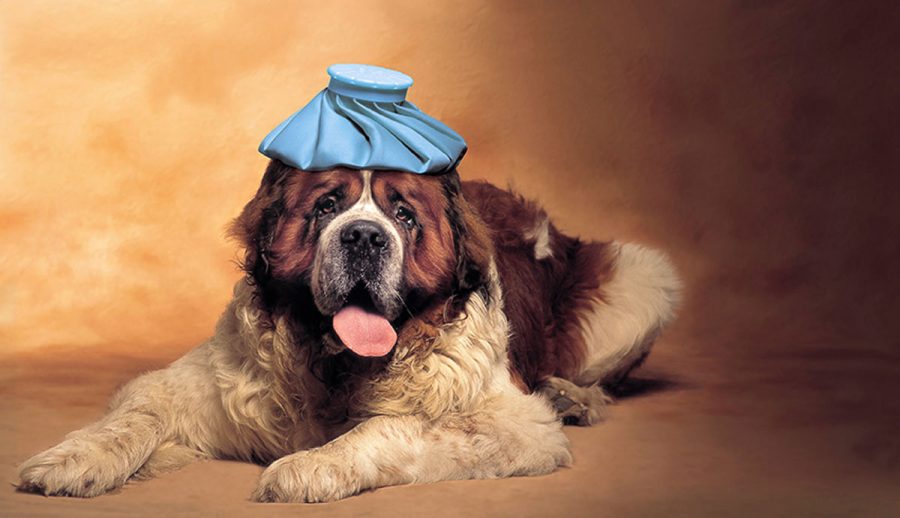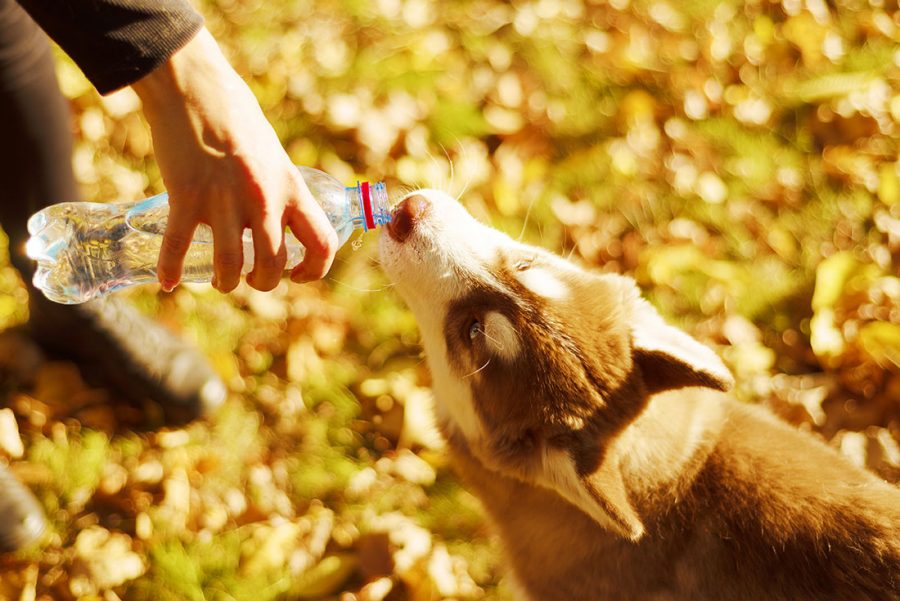As summer is upon us, dogs, like us, are at risk from heat exhaustion or stroke. How can we recognise these conditions?
Do dogs suffer from heat exhaustion?
Exactly like us, dogs can suffer from heat exhaustion, especially when the environment is humid and poorly ventilated. Dogs cannot disperse heath through sweating, like we do. In fact, dogs can only sweat on their paw pads particularly when the dog is stressed. The main way for dogs to reduce their temperature by panting, when the cold air coming into the lungs cools down the body.

Is it the sun or the temperature?
Dogs might overheat because they are exposed to the sun without sufficient protection. But they might also overheat when it is not sunny outside but, for example, the environment is to warm, humid and not ventilated. Additionally, some dogs might be able to regulate their body temperature due to physical issues. For example, for brachycephalic dogs is very difficult to cool down their body and they are prone to overheating and heat exhaustion. Puppies, pregnant bitches, and dogs that are overweight are similarly at risk.
How can I prevent heat exhaustion?
In order to prevent heat exhaustion, it is important to protect our dog on hot days, for example keeping them at home or in the shade. If the environment is particularly warm, we can also wet our dog’s fur with a damp cloth. As the water on the fur evaporates, it cools down the body of the dog. We should also remember that fresh water should always be available.

How can I recognise heat exhaustion?
Should our dog undergo heat exhaustion, they will pant excessively but increased salivation, vomit or diarrhoea might also be present. The dog’s gum might become red and the animal might appear confused and even collapse. In such events, dogs might encounter serious consequences, such as renal or liver failure or intestinal bleeding. It is therefore to bring the dog to the vet with no hesitation.
While we are trying to reach our vet, we can try to cool down our dog. First of all we should move it away from the heat or the sun and we should place cold packs near the large veins of the body, i.e. on the underarm and the inguinal area. We can let our dog drink cool (but not cold) water, making sure they do not drink to fast and avoiding forcing them.
Federica Pirrone, Mariangela Albertini, Patrizia Piotti researchers at UNIMI Veterinaria
